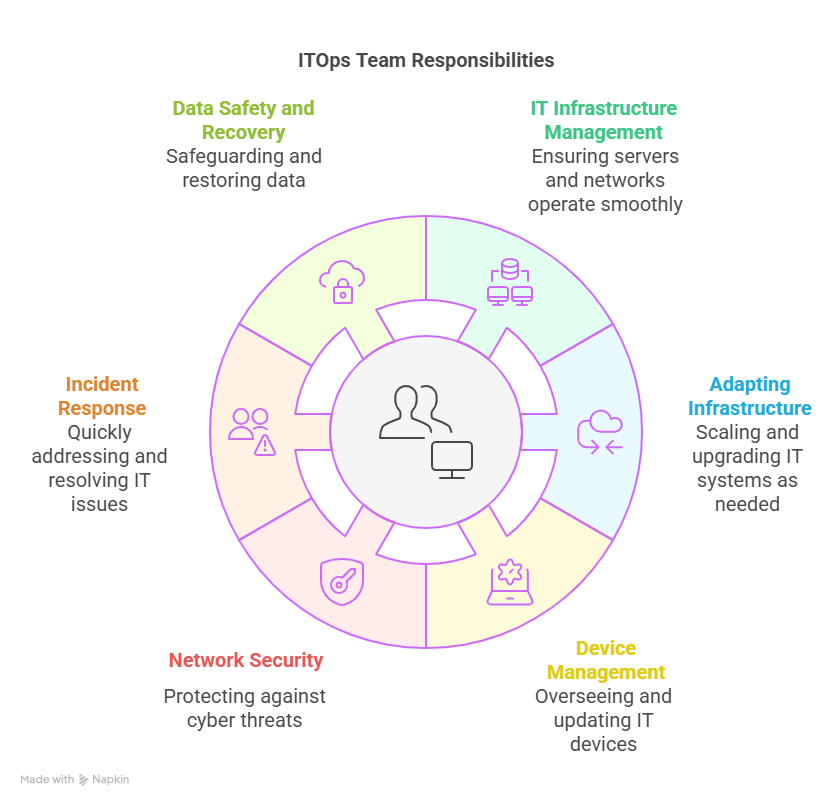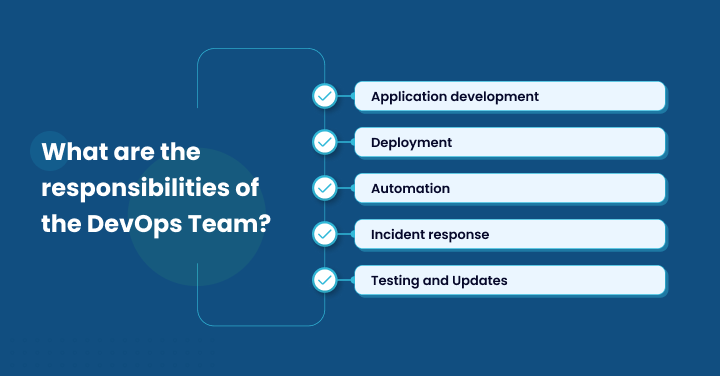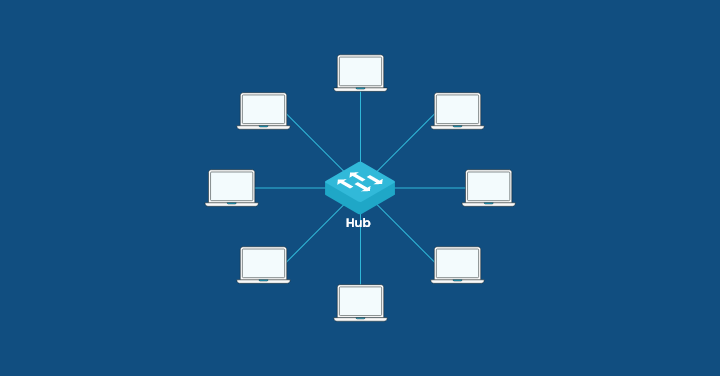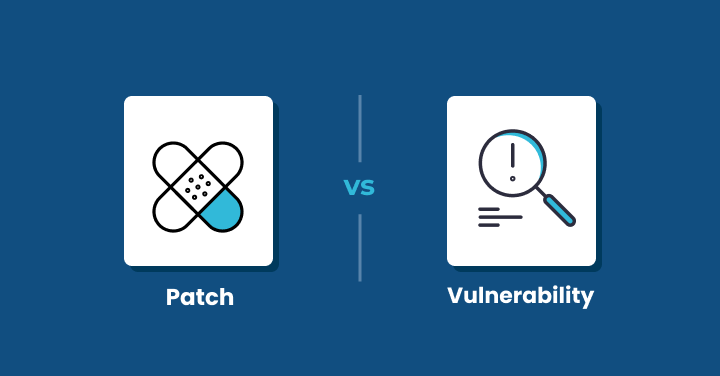In the recent few years, IT Operations (ITOps) and Development Operations (DevOps) are the two distinct practices that have gained much attention in the realm of Information Technology and software development.
The purpose behind designing these practices was to improve efficiency and ensure seamless functioning across the organization’s IT infrastructure. Both might have certain similarities, but they differ in various aspects, such as roles, responsibilities, and methodologies.
ITOps, or IT Operations, is a traditional practice that involves managing physical and software components and underlying technologies.
DevOps, however, is responsible for bridging the gap between development and operations teams. It involves automation and integration processes to improve software delivery speed and quality.
In this post, we will discuss the two practices, ITOps and DevOps, in detail, including what they cover and their responsibilities. We will also highlight the differences between ITOps and DevOps based on different factors to help you better understand each concept.
What is ITOps?
Information Technology Operations or ITOps is a practice responsible for managing all physical and software components of hybrid, on-premises, and cloud infrastructure that are crucial in daily operations.
It covers everything from handling network management security to technological equipment management and ensuring IT operations’ smooth running and delivery.
The ultimate objective is securing the resources necessary for IT teams throughout your organization to perform their responsibilities well.
In simple terms, ITOps is essential for ensuring business continuity and offering a reliable IT environment for all organizational functions.
Implementing ITOps techniques enables businesses to effectively manage their IT infrastructure and ease the workload on their IT staff members. ITOps guarantees the efficiency of businesses’ IT infrastructure, allowing them to operate more quickly, securely, and productively.
What does ITOps Cover?
ITOps covers a wide range of solutions and responsibilities that help add more value to end users and business operations.
It involves process management, i.e., defining and implementing steps essential for releasing new services, and network infrastructure management, i.e., maintaining and provisioning network resources.
This practice further includes managing and monitoring an organization’s servers, data centers, and other physical infrastructure.
Besides these management capabilities, ITOps covers identifying and eliminating bottlenecks, incident response, data safety, device management, compliance regulation, and help desk support services management.
You can even implement automation solutions for the smooth functioning of a business.
What are the responsibilities of the ITOps Team?
Some of the primary responsibilities of an ITOps team include:
IT Infrastructure Management
One of the primary responsibilities of an ITOps team is to manage an organization’s IT infrastructure properly. Under this responsibility, the IT team must look after servers, data centers, and networking equipment operations.
Further, monitoring of the essential hardware and software resources and maintenance to reduce downtime and improve overall operations.
Adapting Infrastructure
Secondly, ITOps teams must ensure that the IT infrastructure adapts to changing technologies and trends as the business evolves. They must scale the infrastructure to add more applications and users per business needs.
Additionally, cloud and hybrid infrastructure solutions, hardware upgradation, and network performance optimization should be incorporated to meet future requirements.
Device Management
Another crucial task of an ITOps team is to manage all IT devices, such as laptops, desktops, or mobile devices. Ensuring that these peripheral devices are in the right state and updated to the latest versions.
Further, ensure the configuration settings, security features, and device deployments are appropriately managed. Monitoring and management of IT devices not only helps reduce technical problems but also enhances productivity.
Network Security
The security of the company’s network infrastructure is greatly dependent on ITOps teams. This entails implementing cybersecurity measures to prevent and mitigate security breaches.
Implement firewalls and intrusion detection systems, run regular audits to protect sensitive data from attackers, and take appropriate action.
Incident Response
IT incidents must be promptly responded to and resolved by IT operations personnel.
Reducing downtime and guaranteeing the seamless running of corporate processes entails analyzing problems, figuring out their underlying causes, and maintaining business continuity by running robust incident response plans. Ensure the entire team is well-trained to handle emergency queries.
Data Safety and Recovery
The IT operations teams within the company are responsible for guaranteeing data recovery and safety. This includes implementing backup and recovery plans, performing regular backups, introducing disaster recovery plans, and ensuring safety against data breaches.
What is DevOps?
Development Operations or DevOps is another set of practices that focuses more on improving and optimizing the internal software development processes.
The main aim of DevOps is to enhance collaboration and accomplish strategic objectives by aligning developers and other IT teams. With the help of this practice, organizations can break traditional silos and encourage a cooperative, iterative method of developing and delivering software products.
Further, this practice involves more management of internal processes and communications tools. In addition to this, the software development team promotes the continuous integration and continuous delivery (CI/CD) concept, which helps deliver applications and services faster.
It allows organizations to fix bugs initially and add new features as demand dictates.
Implementing DevOps practices can benefit organizations by speeding up time to market, improving software quality, improving operational efficiency, and increasing customer satisfaction.
It promotes collaboration and ensures an efficient and agile software development lifecycle.
What Does DevOps Cover?
DevOps encompasses various techniques and concepts associated with software creation and distribution. The software development lifecycle covers everything from planning and coding to testing, deployment, and operations.
It focuses more on collaboration and visibility, which further helps reduce development costs.
This practice covers everything, from automating and managing application deployments to streamlining development processes and offering quick issue resolution.
It involves implementing the technology and tools necessary for cooperation, automation, and continuous integration and delivery.
Continuous improvement and feedback loops are also important concepts in DevOps. Teams are encouraged to gather input from users and stakeholders, examine data, and make decisions to deliver quality software programs.
What are the Responsibilities of the DevOps Team?
Some of the primary responsibilities of a DevOps team include:
Application Development
DevOps teams play a crucial role in application deployments and delivery. They are assigned to implement new features, write code, detect bugs, and monitor the application during production.
By implementing agile development approaches and utilizing automation tools, DevOps teams may expedite the development process, enhance code quality, and deliver software applications more quickly.
The DevOps team’s moderation is also useful when it comes to involving software outsourcing to Eastern Europe, Latin America, and other offshore development hubs.
Deployment
According to the DevOps technique, deployment is a crucial step in continuous delivery. It involves automatically releasing software and incorporating it into the current code base.
Continuous integration and continuous deployment (CI/CD) tools guarantee a seamless and effective deployment procedure. This automation increases operational efficiency and gives a quicker time to market.
Automation
Automation is another crucial task that includes testing, deployment, and monitoring processes. By automating processes, organizations can reduce human error and guarantee an efficient software development lifecycle.
The main idea behind Automation in DevOps is to optimize and streamline the software delivery process.
Incident Response
When something goes wrong in an IT environment, incident response is used to handle and fix it. DevOps incident response is a cooperative endeavor between the development and operations teams.
DevOps teams collaborate to detect and resolve issues swiftly to minimize any disruption to the software delivery process. DevOps teams can effectively handle issues and guarantee smooth operations by possessing development and operations skills.
Testing and Updates
One of the DevOps team’s most significant responsibilities is ongoing testing and software updates. The team’s automated testing integration into the CI/CD pipeline makes early issue detection and resolution possible in the development process.
When applications receive regular updates, they stay secure, functional, and in line with user requirements. DevOps teams collaborate to guarantee comprehensive testing and timely and effective update delivery.
ITOps vs DevOps: Key Differences
While delivering high-quality software and guaranteeing the seamless operation of IT systems are two common goals between ITOps and DevOps, their methods and roles are very different.
When comparing them, it’s critical to understand the main goals and focus areas of DevOps and ITOps. We have listed a few more factors on which you can compare the two and make a better decision.
Goals
ITOps aims to maintain and monitor the organization’s IT infrastructure, whereas DevOps aims to improve collaboration and streamline the software development process.
Both techniques aim to improve the effectiveness of the IT infrastructure and provide better technology services. For example, ITOps helps achieve objectives by ensuring the smooth functioning of daily operations and providing reliable technological services.
DevOps, on the other hand, helps achieve the goal by enhancing collaboration, automation, and delivering of high-quality applications.
By aligning DevOps and ITOps goals with business objectives, enterprises may enhance productivity and maintain competitiveness in the quickly changing digital landscape.
Processes
Another difference between ITOps and DevOps practices is workflow and method of delivering software.
Processes related to network security, device management, incident response, data protection, and IT infrastructure management are the main emphasis of ITOps.
These procedures are usually more stringent and structured to preserve stability and reduce interruptions. On the other hand, DevOps focuses on methods that facilitate automation, cooperation, continuous integration, and deployment.
Intending to increase software delivery speed and quality, these procedures are more adaptable and iterative.
ITOps procedures concentrate on upholding consistency and overseeing physical infrastructure, whereas DevOps procedures prioritize flexibility, teamwork, and automation to expedite the delivery of software and applications.
Structure
ITOps and DevOps teams have different organizational structures based on their areas of responsibility and concentration. ITOps teams have a hierarchical organizational structure with distinct roles and duties, including system administrators, network administrators, security managers, data center managers, and help desk staff.
However, DevOps teams have a cross-functional structure, including developers, the operation team, and engineers responsible for streamlining software development and delivery processes. Many organizations looking to scale efficiently and flexibly choose to hire remote developers to enhance their DevOps capabilities and maintain agility.
While DevOps places more emphasis on collaboration to improve software delivery, ITOps is primarily concerned with managing and maintaining the IT infrastructure.
Tools
ITOps and DevOps use different tools and technologies to achieve their primary goals. In ITOps, team members rely on infrastructure management and network monitoring tools, security programs, and data backup and recovery solutions that help maintain the organization’s IT infrastructure’s efficiency, security, and stability.
DevOps, on the other hand, relies on automation tools, continuous integration, and continuous deployment to enhance the continuous development process and collaboration. Examples of these tools are Jenkins, Docker, Kubernetes, and Git.
Culture
In both ITOps and DevOps, culture significantly impacts how teams interact, develop, and approach their work. Stability, security, and ongoing assistance are frequently emphasized in ITOps culture.
The emphasis is on adhering to defined procedures and guaranteeing the IT infrastructure operates without issues. Reliability and secure workflow adherence are given greater importance.
On the other hand, the culture of DevOps encourages flexibility, teamwork, and ongoing development. Rapid iteration, innovation, and learning from errors are values that DevOps teams uphold. The culture encourages transparency, cross-collaboration, and ease of use in tools and procedures.
Cloud
ITOps and DevOps rely heavily on cloud computing, allowing businesses to use flexible and scalable infrastructure to support their operations. ITOps teams often manage on-site data centers or use cloud infrastructure from suppliers like AWS or Azure.
Whether the IT infrastructure is hosted on-site or in the cloud, ITOps teams ensure it is provisioned, maintained, and managed effectively.
On the other hand, DevOps uses cloud computing infrastructure such as AWS or Azure to optimize deployment and development procedures. Cloud systems offer the automation and scalability needed for continuous operations, delivery, and integration.
DevOps teams may use code to provision and administer infrastructure, which saves time and effort.
Thanks to cloud computing, ITOps and DevOps can benefit from improved workflows, increased scalability, and optimized resource allocation.
Conclusion
Although both ITOps and DevOps are essential components of the IT environment, their approaches, roles, and focus areas are very different. ITOps’ key concerns are managing the company’s IT infrastructure, network security, and operational stability.
Conversely, DevOps is an ideal solution to improve communication between the development and operations teams, optimize the software development process, and consistently produce high-quality software.
Understanding the distinctions between ITOps vs DevOps is vital for enterprises seeking to maximize their IT tactics and accomplish their technological objectives.
We have compared the two based on different factors that will surely help make informed decisions. By combining the advantages of both strategies, organizations may guarantee a reliable IT environment, accelerate software delivery, and increase overall efficiency.









